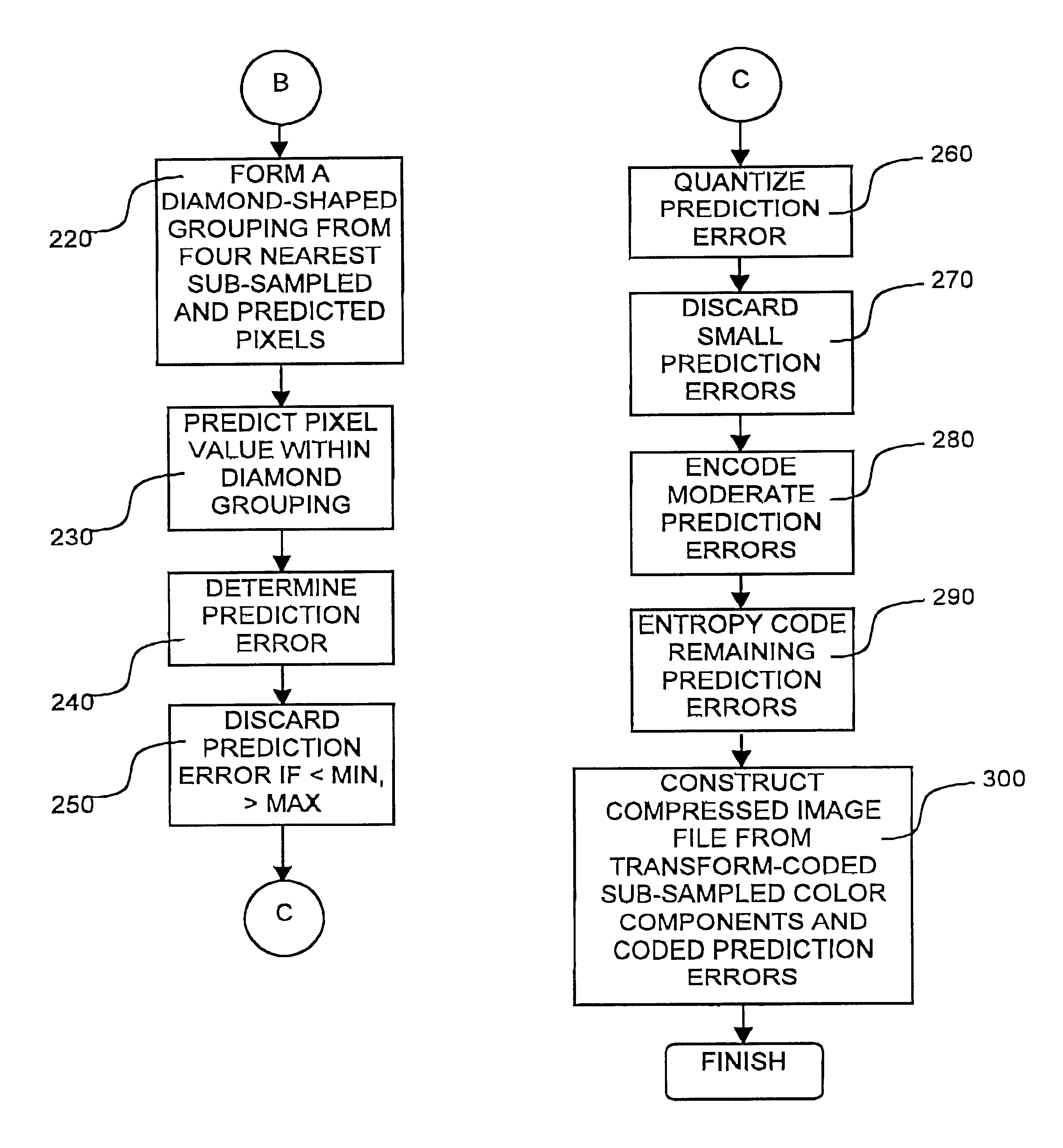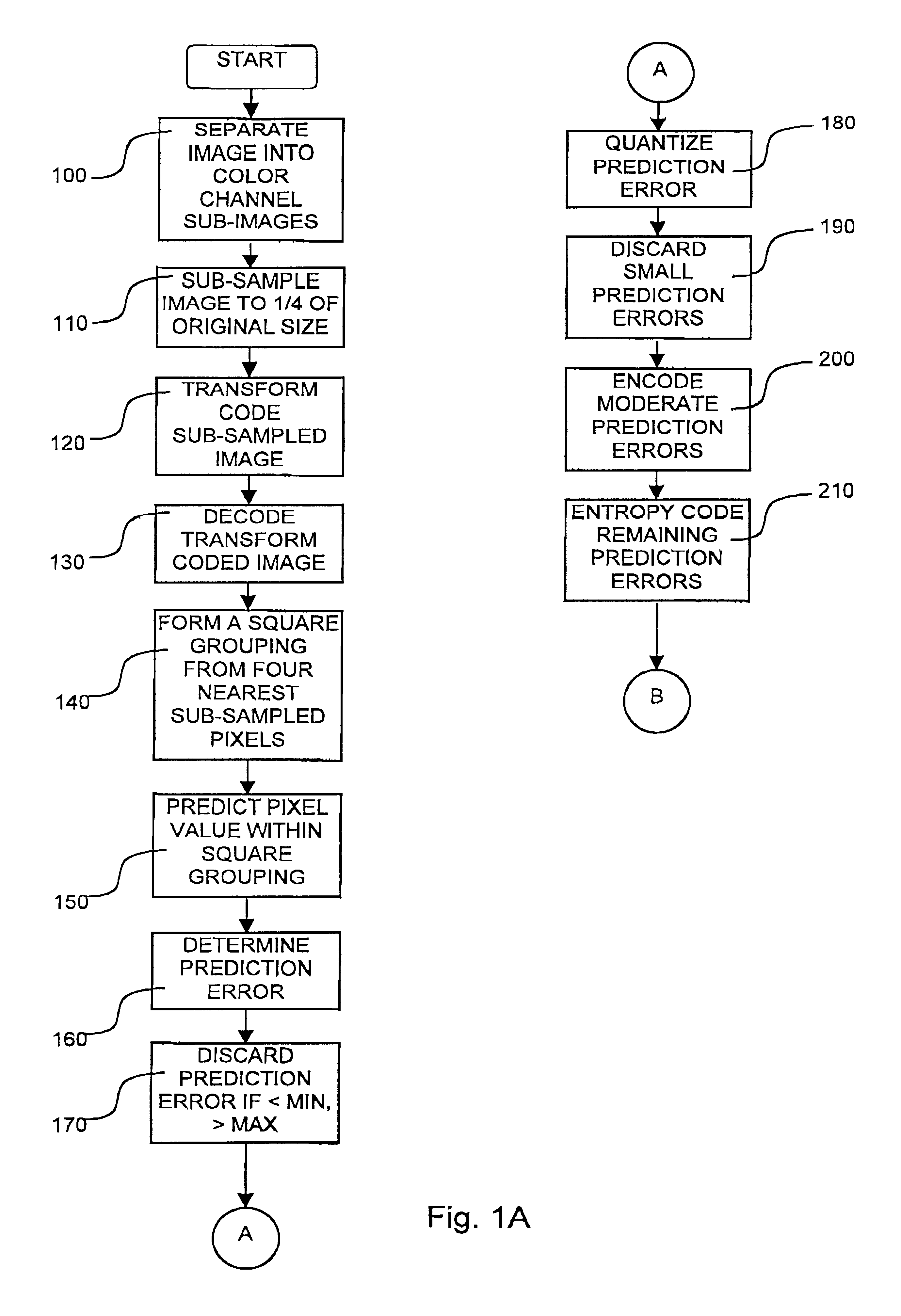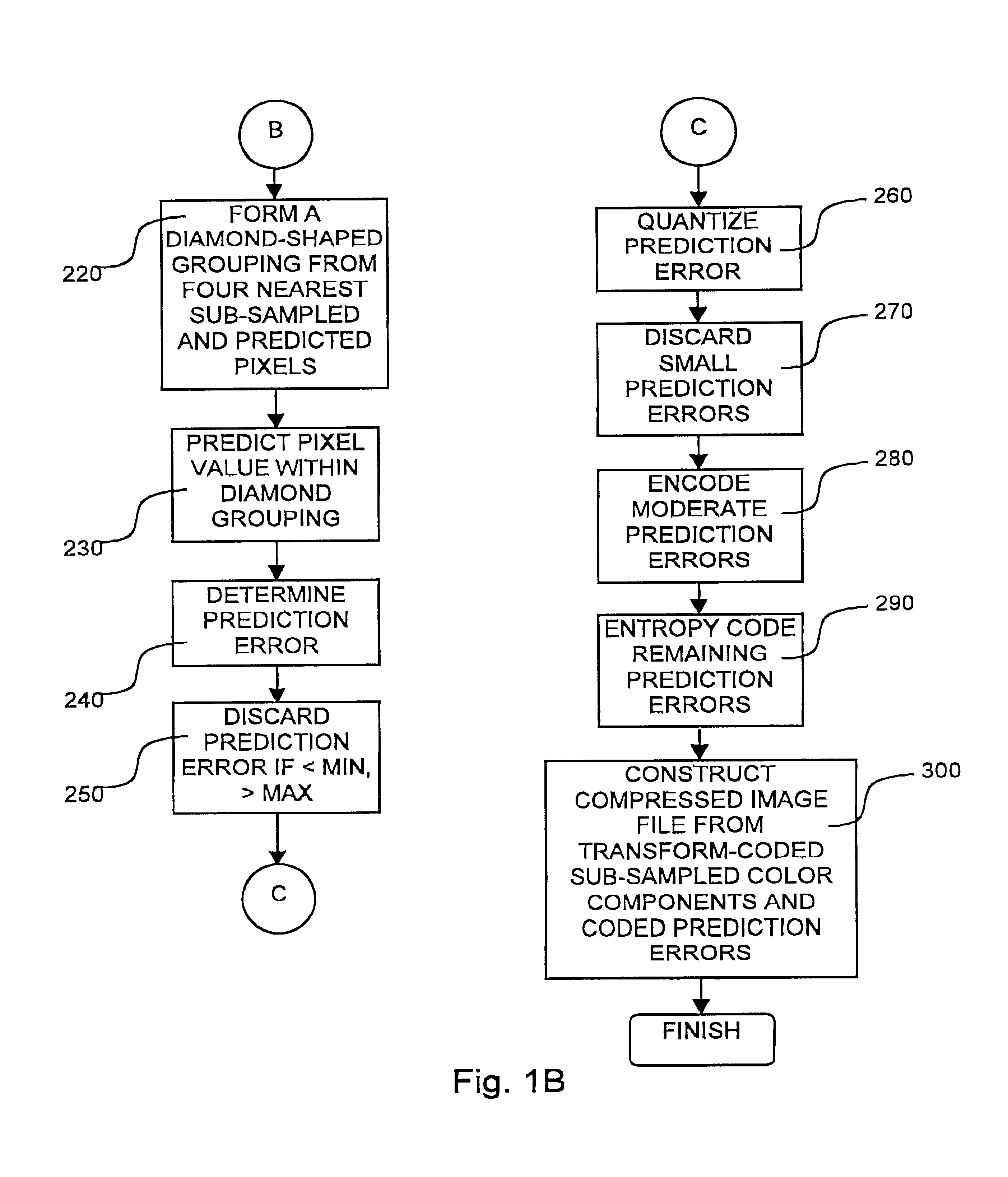Visual lossless image compression
a lossless image and compression technology, applied in the field of image compression, can solve the problems of insufficient and achieve the effect of reducing the cost of time, memory and bandwidth requirements
- Summary
- Abstract
- Description
- Claims
- Application Information
AI Technical Summary
Benefits of technology
Problems solved by technology
Method used
Image
Examples
Embodiment Construction
Reference is now made to FIGS. 1A and 1B, which, taken together, are simplified flowchart illustrations of an image compression method, operative in accordance with a preferred embodiment of the present invention, and FIGS. 2A-2E which are simplified pictorial illustrations of a portion of an image file useful in understanding various stages of the method of FIGS. 1A and 1B. In the method of FIGS. 1A and 1B a color or grayscale image file is separated into distinct color channel sub-images, such as red (R), green (G) and blue (B) in RGB color space or luminance (Y), chrominance (Cb) and chrominance (Cr) in YCbCr color space (step 100). Should the subject image file be stored in a compressed format, such as JPEG, the image is preferably decoded prior to color separation, Subsequent steps of the method of FIGS. 1A and 1B are then performed separately for each color channel sub-image, and references to “the image” may be understood as referring to the particular color component of the ...
PUM
 Login to View More
Login to View More Abstract
Description
Claims
Application Information
 Login to View More
Login to View More - R&D
- Intellectual Property
- Life Sciences
- Materials
- Tech Scout
- Unparalleled Data Quality
- Higher Quality Content
- 60% Fewer Hallucinations
Browse by: Latest US Patents, China's latest patents, Technical Efficacy Thesaurus, Application Domain, Technology Topic, Popular Technical Reports.
© 2025 PatSnap. All rights reserved.Legal|Privacy policy|Modern Slavery Act Transparency Statement|Sitemap|About US| Contact US: help@patsnap.com



